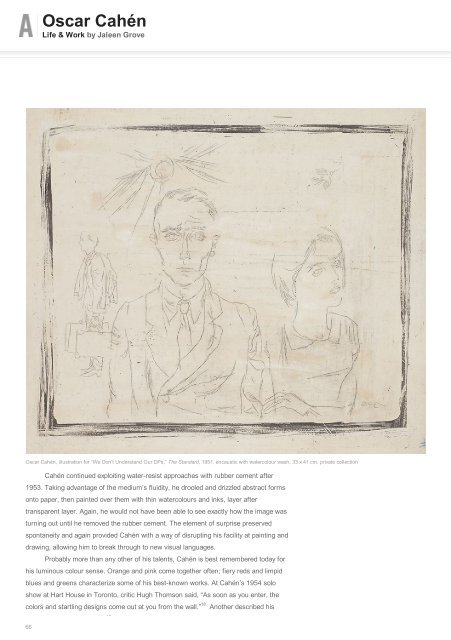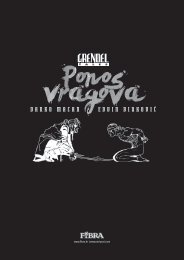Oscar Cahén
Art-Canada-Institute_Oscar-Cah%C3%A9n
Art-Canada-Institute_Oscar-Cah%C3%A9n
Create successful ePaper yourself
Turn your PDF publications into a flip-book with our unique Google optimized e-Paper software.
<strong>Oscar</strong> <strong>Cahén</strong><br />
Life & Work by Jaleen Grove<br />
<strong>Oscar</strong> <strong>Cahén</strong>, illustration for “We Don’t Understand Our DPs,” The Standard, 1951, encaustic with watercolour wash, 33 x 41 cm, private collection<br />
<strong>Cahén</strong> continued exploiting water-resist approaches with rubber cement after<br />
1953. Taking advantage of the medium’s fluidity, he drooled and drizzled abstract forms<br />
onto paper, then painted over them with thin watercolours and inks, layer after<br />
transparent layer. Again, he would not have been able to see exactly how the image was<br />
turning out until he removed the rubber cement. The element of surprise preserved<br />
spontaneity and again provided <strong>Cahén</strong> with a way of disrupting his facility at painting and<br />
drawing, allowing him to break through to new visual languages.<br />
Probably more than any other of his talents, <strong>Cahén</strong> is best remembered today for<br />
his luminous colour sense. Orange and pink come together often; fiery reds and limpid<br />
blues and greens characterize some of his best-known works. At <strong>Cahén</strong>’s 1954 solo<br />
show at Hart House in Toronto, critic Hugh Thomson said, “As soon as you enter, the<br />
colors and startling designs come out at you from the wall.” Another described his<br />
66<br />
19<br />
18



